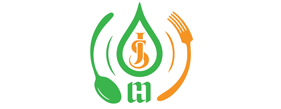
How can plastic lunch boxes be fake and real?
Low-quality disposable plastic lunch boxes are popular with some small restaurants because they are cheap and can be bought for just a few cents. For example, in the production of inferior lunch boxes, a large amount of industrial-grade calcium carbonate, talcum powder, paraffin and other toxic and harmful materials are generally added, posing a direct threat to the health of users.
Convenience chopsticks are too white and need to be careful
Many people think disposable chopsticks are more hygienic and safer when dining out. However, in order to reduce costs, some small workshops use low-quality wood. In order to "whiten" chopsticks, some criminals use sulfur fumigation and bleaching. When eating with such chopsticks, residual sulfur dioxide enters the body.
Colorful straws are fancy but may not be safe
When drinking drinks, be aware that many straws are made of waste plastic, which can cause damage to the liver and kidneys.
Some unscrupulous merchants dye straws to cover up the variegated colors of straws made of waste plastic. The brighter the color, the greater the safety hazard. Experts warn that it is best not to use colored straws. The raw materials do not rule out the possibility of using industrial plastics or even recycling waste plastics. You can follow three steps to identify problematic straws: First, ask to see the information on the production packaging bag, production date, shelf life, production license and serial number (QS logo). Distinguish the color again. Try not to buy colorful ones, and pay special attention to dark ones. Finally, before the straw comes into contact with the drink, smell it for any pungent odor. If there is any odor, it means there must be a problem with the straw.
Cleverly identify disposable paper cups
The quality of disposable paper cups can be identified through the method of "seeing, smelling and touching".
Look: In addition to looking at the manufacturer's name, address, production date, etc. on the packaging, you should also look at the light. If there is blue light or impurities, it is best not to buy it;
Smell: Is there any pungent smell?
